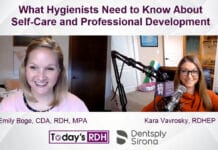Carl Sagan once said, “The truth may be puzzling. It may take some work to grapple with. It may be counterintuitive. It may contradict deeply held prejudices. It may not be consonant with what we desperately want to be true. But our preferences do not determine what is true.”
Critical thinking does not come naturally – it takes some level of skill. Essentially, this is because our brain is not wired to think critically. Rather, it is wired to use as little effort as possible to come to a conclusion. This is in direct contrast to critical thinking. Therefore, if you are not keenly aware of the need to implement certain skills to think critically, you are likely not thinking critically at all.
Without conscious effort to use critical thinking skills, passive thinking can lead to biased, distorted, or partial, often uninformed, and sometimes prejudiced thought processes. In health care, as you can imagine, this is not an option. We must be on top of our game when it comes to critical thinking. Anyone can become a victim of passive thinking and fall into the trap of being misled and, in turn, misleading others.
Critical thinking is imperative when treating dental patients, from deciding on the proper treatment to managing and/or preventing a medical emergency in the office. Becoming complacent is easy to do when doing the same tasks daily. However, this is also how mistakes are made. This could set you, your patient, and/or your practice owner up for disaster in the form of litigation, poor patient care and management, or, in a worst-case scenario, a medical emergency that ends with mortality.
This article will focus on the elements of the reasoning model based on the work of Dr. Richard Paul, the founder of the Foundation for Critical Thinking. In the complete Paul-Elder Critical Thinking Model, more aspects are highlighted, including intellectual standards. However, for the purpose of this article, I will only focus on the elements of reasoning.
I hope this article and the information provided will help you better use critical thinking skills, making it second nature if it isn’t already.1
Purpose
What is the goal or the objective of the article, meeting, or situation? Identifying the purpose is the first step in critical thinking. This will also help to identify motives and intentions. In some cases, motives are nefarious in the sense that the person providing the information may have monetary objectives and misrepresent information to their benefit.
Unfortunately, this happens a lot in the wellness industry. Then that misinformation trickles down to our operatories, and we are tasked with trying to correct misinformation that was shared solely for selling supplements or, in some cases, avoiding dental care in general.
An example of this type of misinformation can be found throughout the book Cure Tooth Decay, Heal and Prevent Cavities with Nutrition by Dr. Ramiel Nagel. Though it is true that proper nutrition and diet can prevent decay, it cannot heal carious lesions that have reached the dentin. Dental professionals are aware of this, but our patients can be manipulated by this misinformation that could lead to a dental emergency. Accordingly, implementing and helping patients utilize critical thinking in the face of this type of misinformation is important in achieving optimal oral health.
A good way to determine the target purpose is to ask yourself questions such as:2
- What is your, my, and their purpose in doing X?
- What is the purpose of this meeting?
- What is the central aim of this line of thought?
I had to implement one of these questions at a morning huddle. The meeting was all over the place, and there was no clear objective. I posed the question, “What are the objectives of this meeting?” I asked respectfully, as my intent was not to be snarky. However, there was no clear objective, and if I am attending a meeting, I want to know what I am supposed to take away from it.
Don’t be afraid to respectfully ask questions about the purpose or objectives of any situation. In some cases, you may be able to mull it over in your own mind and find the answer. In other cases, such as mine, I needed someone to guide me. Don’t be ashamed to ask for guidance, either. Chances are you aren’t the only one with questions.
Question
What is the question at hand? All thinking is essentially answering a question. It may not be a question that was posed, but a question in your own mind. A key element of critical thinking is the ability to question things, even statements that have confidently been delivered.2
Whenever someone makes a claim, I automatically start questioning the claim. Not necessarily because I don’t trust the person making the claim, but because I need to understand it better. I don’t always voice these questions. I just think of them. In some cases, the question is answered later in the article, meeting, or CE course I am taking, and I can put that question to rest.
In health care and dentistry, my favorite question to ask is, “By what mechanism does this occur?” This is applicable to disease processes, pharmaceuticals, and even preventative care options. For example, patients always ask me why I’m taking their blood pressure and what it has to do with their oral health. In other words, the patient is asking, “By what mechanism are these two things connected?” The short answer to this question is inflammation. The longer answer involves discussing cytokines, nitric oxide bioavailability, and endothelial dysfunction.
Most patients are satisfied with the short answer, but there will be a few who have more questions that might require a longer, more detailed answer. I encourage you to embrace this since this is an example of patients using critical thinking skills to understand better and challenge your ability to support your assertion.
Information Supported by Evidence
This is my all-time favorite element of thinking. It encompasses so much of what I see in dental hygiene groups on social media when there is a “taboo” topic. Topics such as vaccines, fluoride, and the use of chlorhexidine all qualify as topics where providing relevant and current evidence would eliminate some level of disagreement regarding these types of topics.2
When making claims, it is essential to restrict your claims to those that are supported by evidence. This means you can’t extrapolate evidence from an in vitro study to apply in vivo. It’s important not to misrepresent evidence, especially if you are the expert in the room.
Use the information to avoid confirmation bias. In other words, search for evidence that would oppose your position as well as evidence that supports it. For example, some dental professionals claim fluoride is inherently dangerous and should be avoided at all costs. I can find hundreds of sites that would support that stance. However, if you do not do your due diligence and investigate the evidence and data supporting fluoride use, you are misusing information. This makes you either negligent or nefarious and does not make you a critical thinker.3
Interpretation and Inference
Interpretation and inference drives our conclusion and give meaningful answers to questions. However, interpretations and inferences are not based on evidence in some instances, making the conclusion inaccurate. It is important to “infer only what the evidence implies.”2
Sometimes, this means that, in some cases, the first conclusion may not be the conclusion. Early research may give an idea of what the conclusion may be. However, future follow-up and often more robust research will likely clarify the evidence, which may lead to an entirely different conclusion.
A good example of this in dentistry is the evolution of periodontal disease, where there has been an evolution of theories. Some focus on certain bacteria. Others consider ecological changes and host lifestyles. Only recently have we started focusing on the combination of host response, biofilm, and systemic diseases.
This understanding evolved through the inference of data. As the data became more specific and robust, the understanding of the disease process was clarified as well. This is also why it is imperative to use the most current data available when making inferences.
Here are some good questions to ask yourself when reading data:2
- Is my inference logical?
- Are there other conclusions I should consider?
- Does this interpretation make sense?
- Does the inference follow the data?
- Is there a plausible alternative conclusion?
Concepts
Concepts include theories, definitions, principles, and models.2 When implementing concepts, you should understand them and be able to explain them to others clearly. Albert Einstein famously said, “If you can’t explain it to a six-year-old, you don’t understand it yourself.” This applies to concepts: How can you implement a concept you don’t understand?
An example of a concept used in dentistry is the evidence-based dentistry concept. This uses science, clinical expertise, and patient needs to determine the best course of treatment for an individual. The treatment needs will likely change with each patient, so it has to be well understood to explain to each patient why the recommendations you are making for them may differ from those of other family members and friends.5
Assumptions
We have all heard the saying about assumptions. However, all reasoning is based on an assumption.2 It is what we do with that assumption that matters. Justifying your assumption with evidence is the only responsible way you should share said assumption. Otherwise, it is just an opinion.
I’m not implying opinions aren’t useful in some cases. However, I am saying that if you want to use critical thinking, you will need to forgo your opinions and base your information and assumptions on evidence.
Assumptions also shape personal points of view. This is why using critical thinking to examine your assumptions is important. You would not want to develop a point of view based on misinformation or disinformation that you then spread to patients, friends, and family.
A few questions you can ask yourself to get clarity on assumptions include the following:2
- What am I assuming or taking for granted?
- Am I assuming something that I shouldn’t?
- What assumption leads to this conclusion?
Implications and Consequences
According to The Critical Thinking Community and the Wheel of Reason, “Implications are claims or truths that logically follow from other claims or truths. Implications follow from thoughts. Consequences follow from actions.”2 Implications are present in our thoughts, even if we do not recognize them. This is the basis for implicit bias, which occurs automatically and unintentionally. This can affect judgments, decisions, and behaviors.6
Stereotyping is a form of implicit bias. This is why it is important to consider all possible consequences. Someone who practices critical thinking considers logical implications in a situation before acting. This reduces the chance of implicit bias and the consequences of negative outcomes.
One of my least favorite scenarios involves age discrimination. For example, an 87-year-old patient presents with a carious lesion that has reached the nerve of the tooth. The patient is asymptomatic, and the dental professional tries to make the decision for the patient regarding treatment options.
So often, I hear, “Should we make this patient invest a lot of money in this tooth? They are 87 years old.”
This is not considering the possibility that this patient, at 87 years young, may end up with a raging toothache one weekend, landing them in the ER and costing a lot more than treating the tooth when it was asymptomatic. This is also an ethical situation as the dental professional is making the decision for the patient rather than providing all treatment options and allowing the patient to decide the course of treatment they would prefer.
A few questions you can ask yourself regarding implications and consequences include the following:2
- Am I sympathetically representing the viewpoints of others?
- If I decide to do “X,” what things might happen?
- What is implied by that statement?
- How significant are the implications of this decision?
Point of View
Point of view is defined as literally “the place from which you view something.”2 This includes your perception as well as what you are viewing. Point of view has multiple limitations, including but not limited to your understanding and education on the subject matter.
This is evident when we have patients who make statements such as, “When I was pregnant, the baby stole my calcium, and now I have bad teeth.”
However, this isn’t limited to patients. Many well-educated individuals misperceive information due to their lack of education on the topic. For example, I’ve had periodontists claim baking soda is too abrasive to use in areas of recession when, in fact, baking soda is one of the least abrasive substances used in toothpaste.
Determining the relevance of one’s point of view is important in providing accurate information. Some questions you can ask to determine if your point of view is based on facts or misconceptions include the following:2
- How could I find out if this is true?
- How can I verify or test that?
- How am I looking at this situation?
- Is there another way to look at it that I should consider?
- Is my view the only reasonable view?
- What does my point of view ignore?
Bringing it All Together
Critical thinking requires effort. There has never been a time when I just default to critical thinking. I always take a step back and evaluate the situation and/or information that is being presented.
Then I ask myself questions, many of which I have shared here with you. Though this is simply one aspect of critical thinking, it is the basis one must master to become a better critical thinker. I believe it is imperative for all health care professionals to master these skills.
We are responsible for the health of our patients, and that is certainly not a responsibility that should be taken lightly. To provide our patients with the best, most accurate, and up-to-date evidence-based care, we must strive to be critical thinkers.
Before you leave, check out the Today’s RDH self-study CE courses. All courses are peer-reviewed and non-sponsored to focus solely on high-quality education. Click here now.
Listen to the Today’s RDH Dental Hygiene Podcast Below:
References
- Paul-Elder Critical Thinking Framework. (n.d.). University of Louisville. https://louisville.edu/ideastoaction/about/criticalthinking/framework
- Wheel of Reason. (n.d.) The Critical Thinking Community. https://community.criticalthinking.org/wheelOfReason.php
- Nickerson, R. Confirmation Bias: A Ubiquitous Phenomenon in Many Guises. Review of General Psychology. 1998; 2(2): 175-220. https://journals.sagepub.com/doi/10.1037/1089-2680.2.2.175
- Rosier, B.T., De Jager, M., Zaura, E., Krom, B.P. Historical and Contemporary Hypotheses on the Development of Oral Diseases: Are We There Yet? Frontiers in Cellular and Infection Microbiology. 2014; 4: 92. https://www.ncbi.nlm.nih.gov/pmc/articles/PMC4100321/
- Dhar, V. Evidence-Based Dentistry: An Overview. Contemporary Clinical Dentistry. 2016; 7(3): 293-294. https://www.ncbi.nlm.nih.gov/pmc/articles/PMC5004537/
- Shah, H.S., Bohlen, J. (2023, March 4). Implicit Bias. StatPearls. https://www.ncbi.nlm.nih.gov/books/NBK589697/











